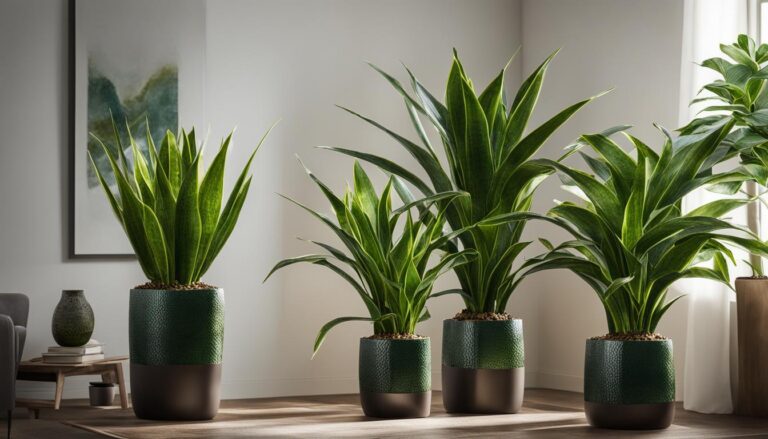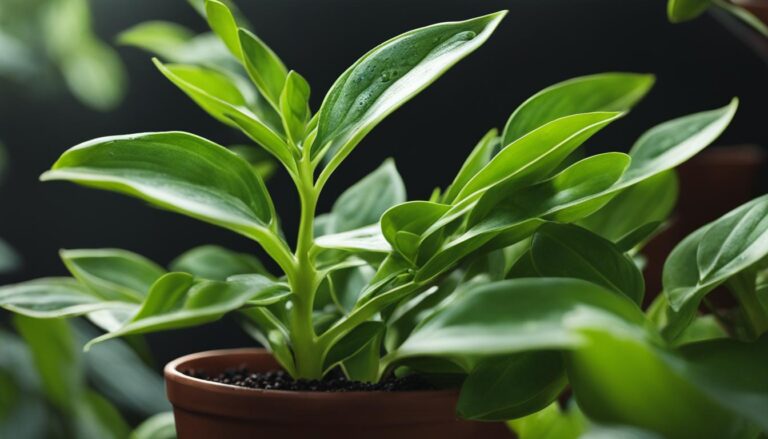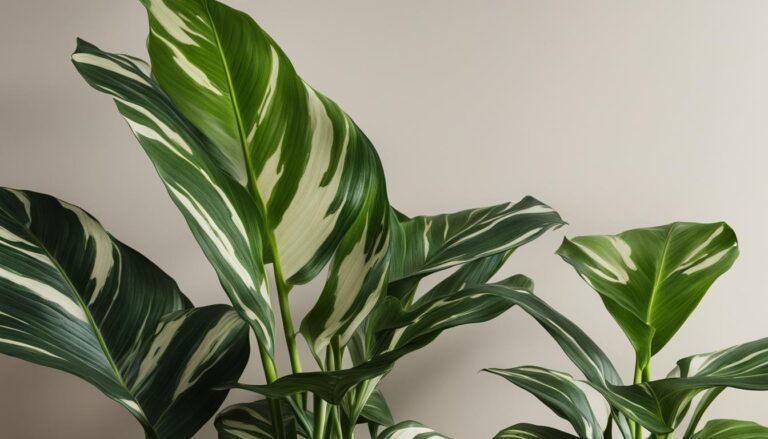
Welcome to my comprehensive guide on caring for Schefflera arboricola, also known as the umbrella tree. As an indoor plant enthusiast, I understand the importance of providing proper care to ensure the health and vibrancy of your houseplants.
In this guide, I will share my expert knowledge on indoor plant care, specifically focusing on Schefflera arboricola. Whether you’re a beginner or experienced plant parent, this guide will equip you with the essential information needed to master the art of caring for this beautiful and versatile plant.
Schefflera arboricola, with its lush green foliage and elegant umbrella-like leaves, adds a touch of nature and beauty to any indoor space. With the right care, this houseplant can thrive and become a stunning centerpiece in your home or office.
I will cover all aspects of Schefflera arboricola care, including lighting requirements, watering techniques, fertilizing tips, pruning methods, and propagation techniques. By following my expert advice, you’ll be able to create an optimal environment for your Schefflera arboricola to flourish.
Whether you’re a plant enthusiast looking to expand your indoor greenery collection or a beginner seeking guidance on plant care, this guide will provide you with everything you need to know about Schefflera arboricola. Let’s dive in and discover the secrets to mastering the care of this stunning houseplant.
Understanding Schefflera Varieties
Schefflera arboricola is just one of the many varieties of Schefflera plants. Each variety brings its own unique characteristics and aesthetic appeal to your indoor or outdoor spaces. Here’s a closer look at some of the popular Schefflera varieties:
- Dwarf Umbrella Plant: This variety is known for its compact size, making it a perfect choice for smaller indoor spaces.
- Queensland Umbrella Tree: With larger and broader leaves, this variety adds a bold and statement-making presence to any space.
- False Aralia: The false aralia is characterized by its variegated leaves, which feature unique patterns and colors.
- Schefflera taiwaniana: This variety has smaller leaves and a more compact growth habit, making it an excellent choice for tight spaces.
- Schefflera rhododendrifolia: With large rhododendron-like leaves, this variety adds a touch of drama and elegance to any setting.
- Schefflera delavayi: This variety exhibits a more tree-like growth pattern and is often used as a focal point in larger spaces.
Each Schefflera variety offers its own unique charm and requires similar care guidelines to thrive. Understanding the characteristics of each variety can help you choose the perfect Schefflera plant to enhance your indoor or outdoor environment.
Comparing Schefflera Varieties
For a more detailed comparison of the different Schefflera varieties, refer to the table below:
| Variety | Description | Size | Lighting Requirements |
|---|---|---|---|
| Dwarf Umbrella Plant | Compact variety with lush green foliage | 2-3 feet tall | Bright, indirect light |
| Queensland Umbrella Tree | Larger leaves with a bold presence | 5-10 feet tall | Bright, indirect light |
| False Aralia | Variegated leaves with unique patterns | 3-6 feet tall | Bright, indirect light |
| Schefflera taiwaniana | Compact growth habit with smaller leaves | 1-2 feet tall | Bright, indirect light |
| Schefflera rhododendrifolia | Large rhododendron-like leaves | 5-8 feet tall | Bright, indirect light |
| Schefflera delavayi | Tree-like growth pattern | 8-12 feet tall | Bright, indirect light |
Providing Proper Care for Schefflera
To ensure the optimal growth and health of your Schefflera arboricola, it’s essential to provide it with the right care. These plants thrive in bright, indirect light, so placing them near a window with filtered sunlight is ideal. Avoid exposing them to direct sunlight for extended periods to prevent leaf scorching.
When it comes to watering, allow the top inch of soil to dry out before watering again to avoid overwatering. Schefflera arboricola prefers slightly moist soil, but it is important not to let it sit in waterlogged conditions. A well-draining potting mix is recommended to prevent water accumulation.
Proper fertilization is crucial for the growth and vitality of your Schefflera arboricola. Use a balanced, water-soluble fertilizer during the active growth season, typically spring and summer.
| Aspect | Details |
|---|---|
| Light | Prefers higher light but can adapt to various levels. |
| Water | Likes moisture; soil should be moist but not wet. Allow soil to dry between waterings. |
| Soil | Typically, a well-draining potting mix is suitable. |
| Temperature | Prefers warmer temperatures and high humidity, typical of its tropical origin. |
| Pruning | Regular pruning helps maintain shape and health, although specific guidance was not mentioned. |
| Aerial Roots | Can produce aerial roots in high humidity and when root bound or pruned, adding to its appeal. |
| Cultivars | Varieties with different leaf colors and patterns, including variegated and dwarf forms. |
| Toxicity | Not known to be toxic, widely used in zoos and pet enclosures without issues. |
Follow the instructions on the fertilizer packaging for the recommended dosage and frequency of application. Be careful not to over-fertilize, as it can lead to salt buildup and damage the plant.
Pruning your Schefflera arboricola is necessary to manage its size and promote bushiness. Remove any dead or yellowing leaves, and trim back leggy growth to maintain a compact and full appearance. You can also prune for shape if desired. Use clean, sharp pruning shears to prevent the spread of diseases.
Propagation Methods
Schefflera arboricola can be propagated through stem cuttings or air layering. Stem cuttings are the most common method and can be easily done by taking a cutting from a healthy, mature plant. Choose a stem with multiple nodes and remove the lower leaves.
Dip the cut end in rooting hormone powder and plant it in a well-draining potting mix. Keep the cutting in a warm and humid environment until roots develop.
Air layering is another method that involves creating a small cut in a healthy stem and wrapping it with moist sphagnum moss or a rooting medium.
Once roots have developed, the rooted section can be cut off and potted as a new plant. This method is best suited for larger, more established Schefflera arboricola plants.
By following these care guidelines and choosing the right propagation method, you can ensure the successful growth and propagation of your Schefflera arboricola.

Troubleshooting Common Issues with Schefflera
As much as Schefflera arboricola is a resilient plant, it can still encounter a few common issues that may affect its overall health and appearance. By being aware of these potential problems and knowing how to address them, you can ensure the continued vitality of your Schefflera.
1. Pests: Spider mites, mealybugs, and scale insects are common pests that can infest Schefflera arboricola. Regularly inspect your plant for any signs of infestation, such as webbing, white cotton-like spots, or tiny crawling insects.
If you detect any pests, take immediate action by gently wiping the leaves with a damp cloth or using an insecticidal soap specifically formulated for indoor plants.
2. Overwatering: Overwatering is a common mistake that can lead to yellowing leaves and drooping stems in Schefflera. To avoid this issue, allow the top inch of soil to dry out before watering again. Always check the moisture level by inserting your finger into the soil.
If it feels damp, hold off on watering until it becomes slightly dry. Ensuring adequate drainage is also crucial in preventing waterlogged soil.
3. Diseases: Schefflera arboricola can be prone to diseases like root rot and leaf spot. These conditions may occur as a result of overwatering or poor air circulation. To prevent diseases, it’s essential to maintain proper watering practices and avoid wetting the foliage when watering.
If you notice any signs of disease, such as rotting roots or black spots on the leaves, promptly trim off the affected parts and adjust your watering routine.
By staying vigilant and taking proactive measures against these common issues, you can ensure that your Schefflera arboricola remains vibrant and healthy for years to come.
FAQ
How often should I water my Schefflera arboricola?
Allow the top inch of soil to dry out before watering again to avoid overwatering.
Where should I place my Schefflera arboricola for optimal growth?
Schefflera arboricola thrives in bright, indirect light. Place it near a window with filtered sunlight.
How can I propagate my Schefflera arboricola?
Propagation can be done through stem cuttings or air layering.
What should I do if I notice pests on my Schefflera arboricola?
Regularly inspect the plant for signs of pests such as spider mites, mealybugs, and scale insects, and take appropriate measures to address them.
What are some common issues that may affect my Schefflera arboricola?
Overwatering can lead to yellowing leaves and drooping stems. Watch out for signs of diseases like root rot or leaf spot and take prompt action to prevent further damage.







2 Comments
Comments are closed.